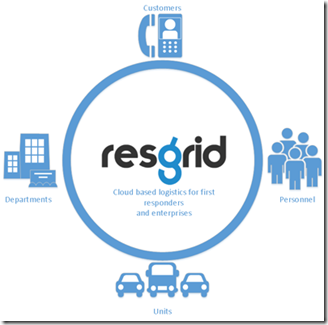What is Resgrid and what have we learned
Resgrid has been around for just over a year now. We started out as a minimum viable product beta release in late 2012 and launched as a paid service in late 2013. In that year Resgrid has changed so much it’s a completely different application. Most of the change has been customer driven. We pride ourselves on listening to our customers, and delivering what they need in a way that useable for everyone on the platform, with a very short turnaround time.
So what is Resgrid?
Resgrid is a system designed to provide logistics and management capabilities for first responder organizations like volunteer and career fire departments, EMS, public safety, search and rescue, HAZMAT and more.
Resgrid was founded by myself and a partner staxmanade. It started as a simple website and a couple of mobile apps with one page and some big buttons. A year later it’s now a complete end to end management and logistics system.
Almost half of what we worked on came directly from our customers and potential customers who found and signed up for Resgrid. Our minimum viable product was far from what we initially released, but we got something out quickly to our potential customer base and listened to the comments and feedback that came in.
Today in Resgrid you can:
- Manage personnel, their schedules, certifications and staffing level
- Manage units, availability and unit logs
- Manage calls, responding, accountability and logging
- Post documents, messages, logs or notes to share with personnel
- Import calls, messages and distribute emails to personnel
- Manage stations, calendars and generate reports
The the feedback we get from our customers has been amazing and helped guide where we spend time and energy developing.
So what have we learned over that year?
Release your product/service as early as possible
Release your product/service with it’s most useful and valuable feature and ensure tat feature is solid. Then start getting feedback from your customers. There’s an old adage “plans never survive first contact with the enemy”. This is true for products and services as well. Resgrid not is not the system that I originally environed, but it’s way better and provides more useful functionality. So the adage can be adopted to be “product designs never survive first use by your customers”.
Be flexible and don’t be married to your ideas/plans
Jason (staxmanade) has a saying he uses from time to time “strong beliefs, loosely held”. This is great advice for people and for products/services. If you resist what your customers want, they will go somewhere else. The Soup Nazi approach only works for so long then when the novelty wears off you stop growing and start shrinking.
Get on the phone, or face to face, with your customers
A lot can be lost from communicating over email, chat, IM or a support system. Some of the more valuable feedback we’ve gotten recently has been with face to face meetings or phone conversations. It’s also been valuable to have at least one dev or other team member there with you observing and asking questions from a different point of view. It’s good to have 2 viewpoints when trying to figure out your customers needs or issues, at least one of those should be a developer.
Bend over backwards for your customers
I’m a huge fan of customer service. No matter what problem your customers are having if you show them you care and work hard on solving and understanding their problem that buys a lot of loyalty. I’ve talked with people who have stop using a product/service for one reason or another but rave about it to others. Why? Because they had a great experience even if it wasn’t the best fit.
Build a team
You can go it alone, but it’s best if you have ay least one other person to back you up. Having another developer (even if they can’t contribute a lot of code) to bounce ideas off of, work out the best implementation and to check your code is a huge help.
Balance architecture, features, UX and bugs
It’s hard, but the best architecture/implementation won’t sell your product. But completely neglecting it means it’s harder and more expensive for you to develop new features. Features help sell your product, lots of customers look for ‘bang for the buck’, which means they want lots of features for a good price. Other customers aren’t afraid to go a ‘best of breed’ approach, where they buy systems because they are the best implementation of the feature they want. Your User Experience is also very important, your system needs to be easy to use, good looking and well laid out. Bugs will drive your existing customers mad, but because they don’t ‘help sell’ they can be put on the back burner. Don’t neglect your bugs for too long.
So those are some of the lessons learned over the last year. We still have a lot of learning to do as we work on making Resgrid the premier logistics and management system for first responders.
